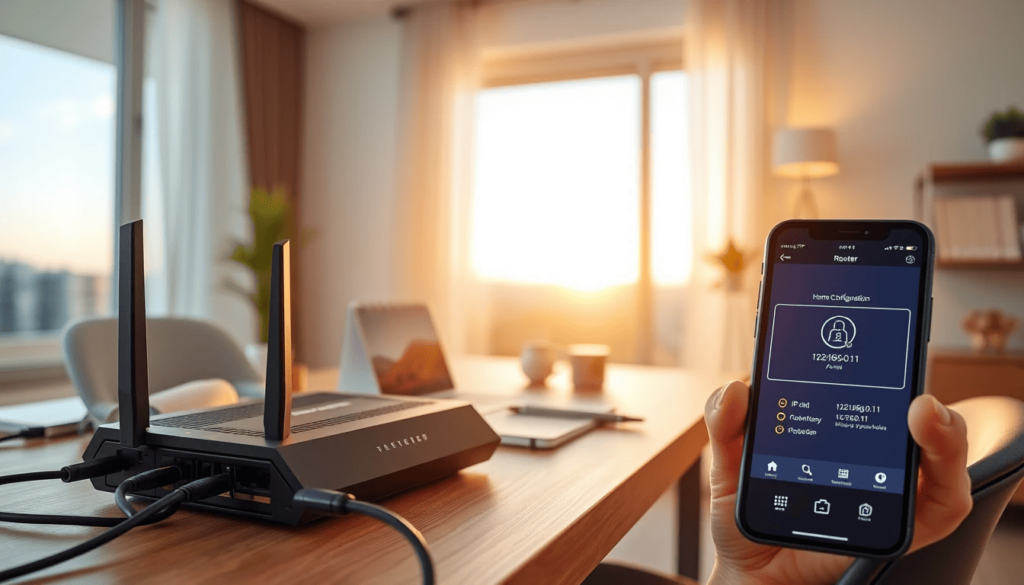How to configure router for remote work on 192.168.0.1 and 192.168.1.1

- How to configure router for remote work on 192.168.0.1 and 192.168.1.1
- How do I access my router configuration page?
- What are the common troubleshooting steps for router connectivity?
- How can I enable remote management on my router?
- What should I do if I can't ping my router?
- How do I change the default login credentials for my router?
- What are the risks of setting remote management IP to 255.255.255.255?
- Best practices for router configuration for remote teams
How to configure router for remote work on 192.168.0.1 and 192.168.1.1
Configuring your router for remote work can significantly improve efficiency and connectivity. In this guide, we will explore essential steps to ensure your router is ready for remote access using the IP addresses 192.168.0.1 and 192.168.1.1.
Understanding how to configure your router properly is crucial for maintaining a stable and secure connection. This article covers various aspects, including troubleshooting common issues, changing security settings, and enabling remote management.
How do I access my router configuration page?
To begin configuring your router, you need to access its configuration page. This can typically be done by entering either 192.168.0.1 or 192.168.1.1 into your web browser's address bar.
Once you access the page, you'll be prompted to enter your login credentials. If you haven't changed them before, the default username and password are often found on the router itself or in the user manual.
- Open your web browser.
- Type 192.168.0.1 or 192.168.1.1 in the address bar.
- Enter your username and password.
- Click on the login button to access the settings.
After logging in, explore the various options available in the menu. This includes settings for wireless networks, security, and remote management.
What are the common troubleshooting steps for router connectivity?
When experiencing connectivity issues, there are several troubleshooting steps you can take. First, check all physical connections to ensure everything is plugged in securely.
Next, verify your computer settings. Ensure that your device is set to obtain an IP address automatically. You can do this by running the command ipconfig/all in your command prompt to see your current IP configuration.
- Check the power status of your router.
- Restart your modem and router.
- Ensure your network adapter is enabled.
- Run diagnostic tools to identify issues.
These steps can help identify common issues and restore connectivity effectively. If problems persist, consider contacting your Internet Service Provider (ISP) for further assistance.
How can I enable remote management on my router?
To enable remote management, log in to your router's configuration page. Look for the settings related to remote management, which may be found under "Administration" or "Advanced Settings."
Once you locate the remote management settings, enable the feature and specify which IP addresses can access the router remotely. It’s highly recommended to limit access to known IP addresses for security purposes.
- Navigate to the remote management section.
- Enable remote management.
- Specify allowed IP addresses.
- Save your settings.
By following these steps, you can enable remote access securely, allowing you to manage your network from anywhere.
What should I do if I can't ping my router?
If you cannot ping your router, this may indicate a connectivity issue. First, ensure that your router is powered on and operational. Check the lights on the device to confirm.
Next, verify your computer's network settings. If your device is not connected to the router, you won’t be able to ping it. Ensure you are connected to the right network.
- Run the command ping 192.168.0.1 or ping 192.168.1.1 in the command prompt.
- Ensure your firewall is not blocking the ping request.
- Check the router settings to ensure it allows ping requests.
If you still cannot ping the router, consider restarting your router and checking for any firmware updates that may be required.
How do I change the default login credentials for my router?
Changing default login credentials is essential for maintaining security. After logging into your router’s configuration page, navigate to the "Administration" or "System" settings.
Look for the option to change your username and password. Select a strong password that combines letters, numbers, and special characters to enhance security.
- Navigate to the settings where you can change the credentials.
- Choose a new username and a strong password.
- Save your changes and log out.
Regularly updating your login credentials is a best practice for safeguarding your network.
What are the risks of setting remote management IP to 255.255.255.255?
Setting the remote management IP to 255.255.255.255 allows access from any IP address, significantly increasing security risks. This configuration could lead to unauthorized access and potential breaches.
It is crucial to restrict remote access to specific IP addresses. This limits the number of devices that can connect to your router remotely, enhancing network security.
- Using 255.255.255.255 may expose your network to attacks.
- Always specify trusted IP addresses for remote management.
- Regularly review and update your remote access settings.
By being proactive about your security settings, you can protect your network from vulnerabilities.
Best practices for router configuration for remote teams
When configuring your router for remote work, consider implementing the following best practices:
- Regularly update your router’s firmware to address security vulnerabilities.
- Use strong encryption methods for your Wi-Fi network.
- Set up a guest network for visitors to keep your main network secure.
- Monitor connected devices frequently to identify unauthorized access.
By following these practices, you can ensure a secure and efficient remote work environment. Proper configuration and management are essential to support remote teams effectively.
In summary, understanding how to configure router for remote work on 192.168.0.1 and 192.168.1.1 is vital to maintain a secure network for remote access. By following the steps outlined in this guide, you can enhance your router's functionality and address common issues that arise in remote work scenarios.

Deja una respuesta